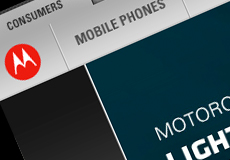By
Paula ParisiJanuary 11, 2013
Chip manufacturer Broadcom unveiled a number of new technologies at CES, including the first Ultra HDTV home gateway chip, a decoder that will enable 4Kx2K resolution distribution to the home. The company, whose enclosed convention space at the back of South Hall was abuzz with activity, also showcased its first 5G Wi-Fi wireless IPTV set-top box platform, which enables carriers to deliver HDTV programming to more devices, reliably and with greater speed and range. Continue reading CES 2013: Broadcom Introduces UHD Home Gateway and 5G Wi-Fi
By
emeadowsDecember 17, 2012
As the Google TV platform fails to gain traction, Google is looking to sell its Motorola Home Business, which is responsible for building set-top boxes for cable providers. The Motorola cable box business was acquired by Google for $12.5 billion last year. According to Bloomberg, Google has received multiple offers, the most compelling coming from Arris Group Inc. and Pace Plc. Google reportedly wants to sell in order to focus on its high-end smartphone business to ramp up competition with Apple. Continue reading Google Fields Bids from Arris and Pace on Motorola STB Business
A new software platform developed for television by the MeeGo open-source community (hosted by The Linux Foundation) is expected to launch as early as next month. MeeGo Smart TV 1.2 was developed in order to enable service providers to combine pay TV, apps, video and a variety of other content in a unified set-top box. According to MeeGo, “This release provides a solid baseline for device vendors and developers to start creating software for various device categories on Intel Atom and ARMv7 architectures.”
The MeeGo Smart TV platform is based on the MeeGo 1.2 release that came out last week, just prior to the MeeGo Conference in San Francisco (May 23-25). MeeGo TV hopes to succeed where others have failed regarding efforts to fuse TV and the Web by remaining open to applications from a multitude of developers.
“What people don’t want is a browser on their TV,” explained MeeGo TV Architect Dominique Le Foll at the MeeGo Conference. “Instead, just as on a mobile phone, consumers prefer to use apps that are optimized for the device.”
CIO.com reports: “The MeeGo team is not alone in recognizing this. Even TV manufacturers, including Sony and Vizio, are trying to build up stores of apps and widgets that can be used on their sets. But MeeGo’s openness gives it advantages over other options for connected TVs, Le Foll said. Previous TV-Web systems have been based on set-top boxes with traditional embedded operating systems, which are difficult and expensive for service providers to update and maintain. By contrast, MeeGo TV is maintained by a community of developers, organized on the model of the Linux community and managed by the Linux Foundation.”
The MeeGo press release outlines the anticipated development schedule: “MeeGo development continues forward on a six-month cadence, with MeeGo 1.3 scheduled to be released in October, 2011. Many new features targeting MeeGo 1.3 have already been accepted in MeeGo Featurezilla. The development tree for MeeGo 1.3 is open and we are starting to integrate new components now.”
Interesting history of the project from The Linux Foundation (pdf format): “Introduction to the MeeGo Project”
One-year anniversary overview from The Linux Foundation (pdf format): “12 Months Since the Project Announcement: Where Are We and What’s New in MeeGo1.1?”

